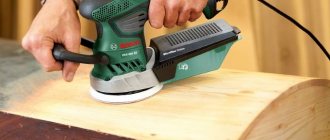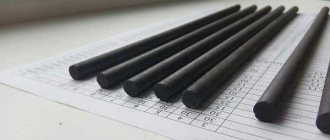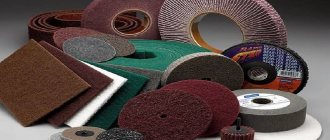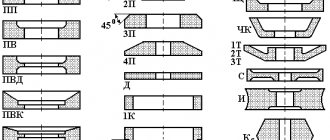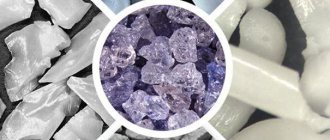Features and properties of rolled corrugated sheets
The indispensability of this rolled product is due to its attractive performance characteristics and a large selection of assortments.
This material reveals the manufacturing technology of corrugated sheets, the method of applying corrugations and the consequence of this in the form of improved technical characteristics. For example, a very important factor is the appearance of anti-slip properties. Today, there are a number of regulatory documents (primarily GOSTs) according to which the product is produced and its quality is monitored. There are, for example, standards regarding the size of the riffles and their pattern.
Among the advantages of the material, there are a number of advantages that make it preferable compared to existing analogues. Among them we name ease of processing, corrosion resistance, durability, resistance to deformation, etc.
More detailed information on products can be found here: Corrugated sheet
Rolled metal is a product that does not lose its popularity and demand even in times of crisis. It is indispensable in modern construction due to its wide range of products and high performance characteristics.
Among hundreds of rolled metal products, the most important is corrugated sheet - this is a rectangular product made of steel on a smooth base. By pressing and molding, a certain geometric pattern is formed on the upper part - riffles. The height of the formed convexities ranges from 0.5 mm. The position of the pattern on the sheet is formed from each other at a distance of up to 200 to 350 mm. Geometric patterns include rhombuses, squares, stripes, and strokes. Depending on the capabilities of the enterprise, it is possible to produce custom-made corrugated sheets with a specific pattern on it.
This type of rolled metal is supplied in rolls and sheets. The technical characteristics and external characteristics of the product directly depend on the steel alloy or iron and rolling technology.
The key feature of corrugated sheets is the presence of riffles. These convex irregularities create an anti-slip surface, making movement on such metal flooring safe both in large industrial facilities and in small domestic areas (flights of stairs).
Application of Aluminum Corrugated Sheet
Corrugated aluminum is an extremely popular and sought-after metal product that can be used everywhere. Among the areas of application of corrugated aluminum sheets are construction, production sites (including stairs, flights of stairs, passages, etc.), automotive and instrument making, agriculture, aircraft manufacturing and many others.
Due to their high resistance to corrosion, aluminum corrugated sheets can be used both outside and indoors, used as a finishing material and floor coverings. Very often, corrugated aluminum is used for lining refrigerated vans and car vans. In the food industry, corrugated aluminum is used for flooring.
The main function that makes corrugated aluminum so popular is the formation of an anti-slip coating. But today, very often, corrugated aluminum sheets are used for decorative purposes, for example, for tuning cars, motorboats, boats and other vehicles, as decorative elements. You can’t do without corrugated aluminum in the production of refrigeration rooms, installations, as well as many household appliances.
Supplier: LLC RTG "MetPromStar"
Production of corrugated sheets
How are ripples made on the surface? To sell this type of rolled metal, it is necessary to use the hot deformation method, which includes 3 production stages:
- Carbon steel is heated in hot rolling machines and rolled.
- Using rollers, smooth sheets are pushed through the press, and then the product comes out of the machine: on one side the workpiece is smooth, on the other there is a grooved pattern of a given shape and size.
- Corrugated sheets are cooled and certified.
To sell these products, different grades of stainless steel are used, as well as alloys of iron and other alloyed metals. To achieve maximum product protection against corrosion, some corrugated sheets undergo a galvanizing procedure. An additional protective layer reduces to zero the oxidation of metals under the influence of moisture, salts, acids and alkalis.
The most popular sheet is corrugated stainless steel with galvanized coating.
The peculiarity of corrugated sheets is the presence of a pattern, which can be of two types:
- lentil ornament (quintet, duet, regular);
- rhombic pattern.
Regardless of the shape of the pattern, the sheets have identical anti-slip properties.
Calculation of the weight of galvanized sheet with polymer coating
- Iron density - 7.85 t/m3
- Zinc density - 7.13 t/m3
- Polymer coating density - 1.5 t/m3
- Thickness of polymer coating - 0.035mm
- The thickness of the cold-rolled substrate for class 1 zinc coating is 0.05 mm less than the thickness of the finished product, class 2 - by 0.03 mm
| Zinc coating class | Thickness of zinc coating, mm |
| 1 | 0,0381 |
| 2 | 0,0216 |
| Z100 | 0,0208 |
| Z140 | 0,0212 |
| Z180 | 0,026 |
| Z200 | 0,0297 |
| Z275 | 0,0405 |
| Z350 | 0,0529 |
The mass of 1 m2 is calculated using the formula: M=t*l*h*? , where t-width, l-length, h-thickness, ?-density.
An example of calculating the mass of 1 m2 of galvanized rolled steel with a polymer coating 0.5 mm thick, class 2 zinc coating: m=0.47 x 1 x 1 x 7.85+0.0216 x 1 x 1 x 7.13+0.035 x 1 x 1 x 1.5=3.89kg
Explanation: the thickness of the cold-rolled substrate in mm is multiplied by the sheet area (1x1m) and the density of iron (7.85 t/m3) - the mass of the rolled material is obtained. The mass of the galvanized coating is added - the thickness of the galvanized layer with coating class 2 (from the table) is multiplied by the area and density of zinc (7.13 t/m3). Next, the mass of the polymer coating is added, which is calculated as thickness (0.035 mm) multiplied by area multiplied by density (1.5 t/m3).
Technical characteristics: dimensions of corrugations, sheets and weight of rolled products
Corrugated sheets can differ from each other not only in the type of alloy, but also in the thickness of the sheet: from 2.5 - 12 mm. The height of the riffles can also vary from 3 to 6 mm.
The width of the corrugated sheet can be 600-2200 mm, and the length from 1400 to 8000 mm. In this case, the height of the riffles should not exceed 30% of the total thickness of the product.
At the same time, riffles, like sheets in general, also have the following parameters according to GOST. The width for a rectangular pattern is 5 (±0.15) mm, for an oval pattern the width is 3.6-6 (±0.15) mm. If the corrugated sheet has a thickness of more than 5 mm, then the height of the corrugations will be at least 1 mm.
In corrugated sheets with a lenticular pattern, the length of the corrugation can be 24 mm and the radius of curvature 30 mm. The distance between adjacent riffles must comply with established GOST standards and be within 20.25 and 30 mm.
Corrugated sheets, where a rhombic pattern is chosen as a geometric pattern, have more flexible requirements and tolerances for the placement of figures on the surface of rolled metal. Diamonds, where the aspect ratio is 25-30/60-70, are the most common, but it is also possible to produce riffles in other sizes.
When choosing a building material, special attention is paid to the weight of the product. For 1 sq.m. corrugated sheet accounts for:
- with a rectangular pattern 21-99.3 kg;
- with oval ornament 20.1-96.8 kg.
Advantages of corrugated steel sheet
When using a corrugated sheet, there is no need to carry out a whole range of measures aimed at ensuring high adhesion properties to the surface. This feature, in particular, makes it possible to ensure a high level of safety for personnel working in industrial production conditions.
At a low cost, corrugated steel sheets are a simple but very effective means of preventing various injuries due to shoes slipping on the surface.
Application of rolled metal
The main industry requiring corrugated sheets is the construction industry. This rental is the basis for the construction of staircase structures, in particular on open street areas, thresholds and ramps at the entrance to the premises. It is the main material for flooring in tire shops. Corrugated sheets are used to reinforce floors or construct wall partitions. Can be used to construct observation platforms, pedestrian crossings and ventilation systems.
Corrugated sheets are used in the agricultural industry, in particular for the improvement of farms. It is convenient to store grain, hay and other mixtures in containers made of corrugated sheets.
The scope of application of corrugated sheets directly depends on the thickness of the product. For the construction of small buildings and civil objects, sheets less than 3 mm are used. In large industrial enterprises, corrugated sheets with a thickness of more than 3 mm are used.
The building material has gained popularity in many areas and areas of human activity. This was achieved due to a number of unique properties of the material:
- Stainless steel does not respond to salts and moisture, which makes the material resistant to corrosion;
- high breathability due to through-type riffles;
- resistance to deformation, physical and mechanical damage;
- anti-slip surface;
- aesthetic appeal of building materials;
- ease of processing: the ability to cut and weld sheets;
- service life over 35 years.
Requirements for the quality of rolled products, marking of sheets
In order not to get confused in the assortment on the market and to choose the appropriate type of rental, you should know how to read the markings correctly and what each letter on it means. How to understand what is meant by the name “diamond sheet V-K-PU-4.0x1500x6000 BStZsp GOST 8568-77”. At the beginning of each designation there is the name of the product and the type of pattern, then its parameters (thickness, width and length), after which the marking indicates the steel grade and its certification for compliance with GOST requirements.
Regardless of what marking the corrugated sheet has, it must meet the general requirements for product quality. The width of the product must correspond to that indicated on the marking, and the error can be up to +25 mm. All sheets put on sale must be sanded on all sides, completely free of nicks. The surface of the product on the smooth side should not have bubbles or obvious contamination of the metal. The sheet on the riffle side should have a clear pattern, where the step size of one riffle to the other will be identical.
Products in which technical defects in the form of rolled film or edge delamination were found are defective and are not available for sale.
Source: cvet-metall.com
Types of corrugated steel sheet
Depending on the shape and location of the corrugations, there are two types of production of corrugated steel sheet:
- Sheet with diamond corrugation. It is characterized by a certain arrangement of large diamond diagonals of 25-30 and 60-70 mm, and a standard corrugation configuration.
- Steel sheet with lentil corrugation. The riffles on it have an oval shape, reminiscent of plant grains, located at an angle of 90 degrees. to each other and 45 degrees to the sides of the sheet. The distance between adjacent riffles is 20, 25 or 30 mm.
There are also types of fluting such as duet and quintet, but they are not so common.
Depending on the purpose, corrugated sheets are manufactured:
- Measured length;
- Unmeasured length;
- Multiple measured length;
- Measured length with a remainder of no more than 10% of the batch weight;
- A multiple of the measured length with a remainder of no more than 10% of the batch weight.
Corrugated steel sheets are distinguished by manufacturing precision in thickness:
- Rolled high (A) precision;
- Rental of normal (B) accuracy.



